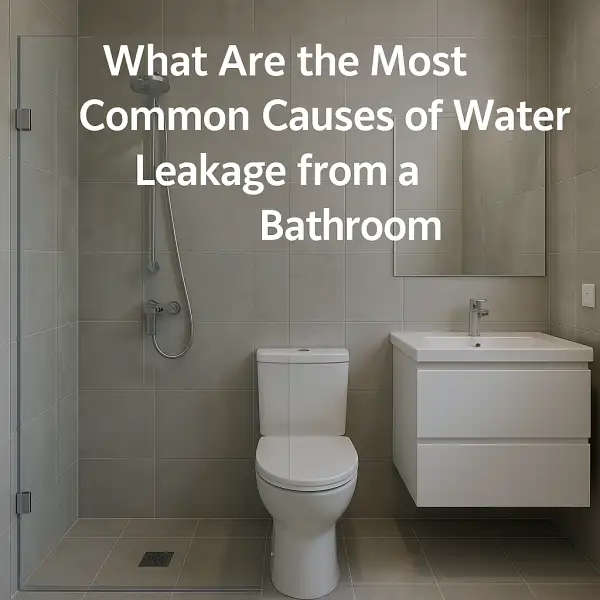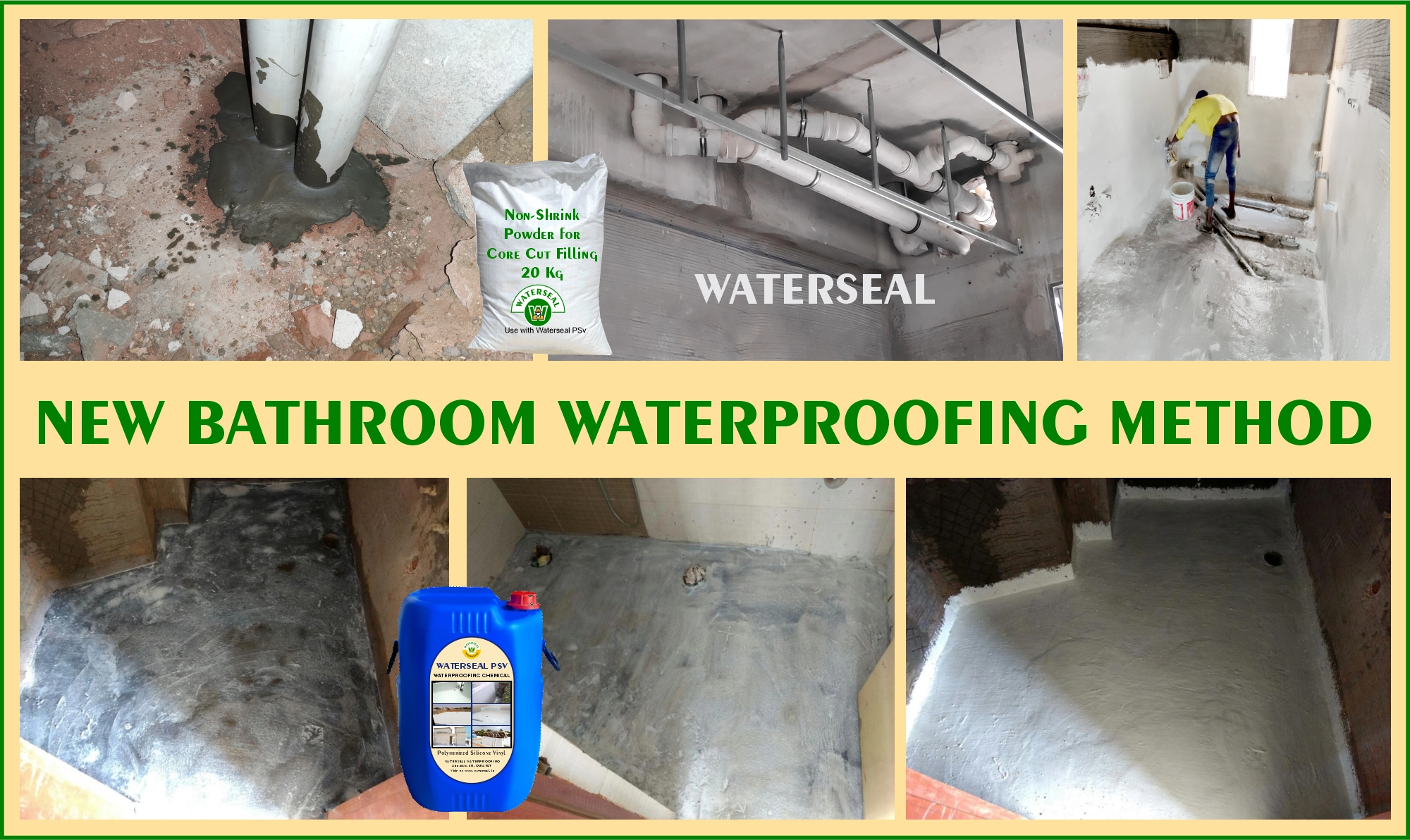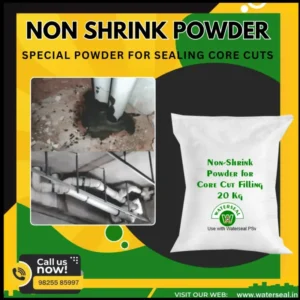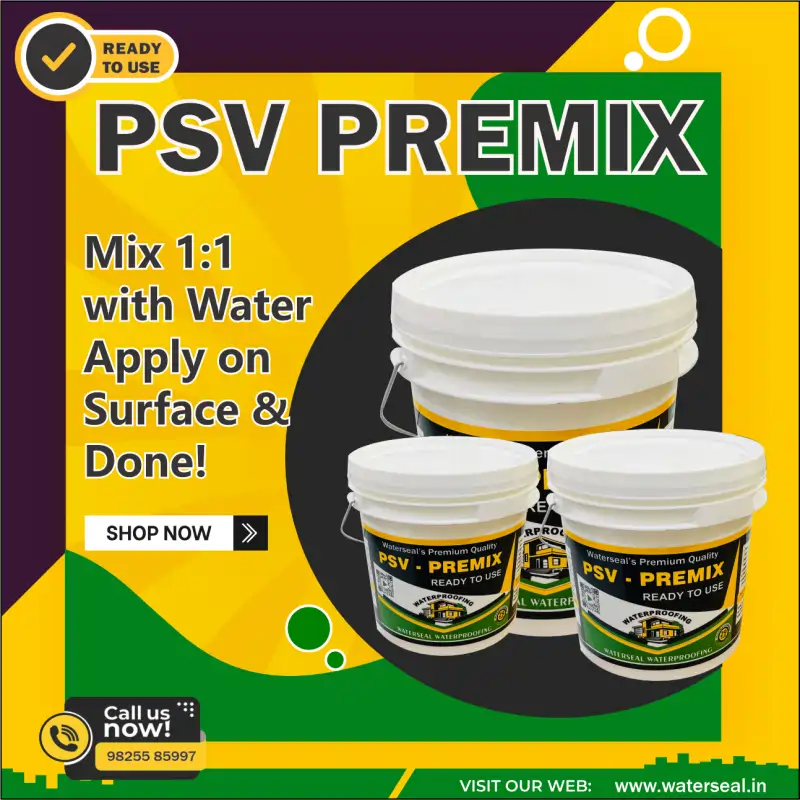What is Bathroom Waterproofing?
Bathroom waterproofing is the process of protecting bathroom surfaces from water leakage, moisture intrusion, and long-term structural damage. It is a crucial step in maintaining the durability, hygiene, and aesthetic value of any bathroom. By creating a water-resistant barrier, waterproofing prevents mold growth, damp patches, and deterioration of walls, floors, and fixtures.
As one of the most frequently used and moisture-exposed areas in a home, bathrooms are particularly vulnerable to water damage. Daily exposure to steam, splashes, and humidity can cause water to seep through tiles, grout, and cracks, leading to hidden leaks and costly repairs.
Effective bathroom waterproofing involves the use of advanced techniques and materials such as waterproof membranes, sealants, and liquid coatings. These products form a durable shield that blocks water from penetrating bathroom surfaces, keeping the space dry, safe, and structurally sound.
Choosing the right waterproofing method and materials is essential for long-term protection. Below, we highlight the four most effective bathroom waterproofing techniques, trusted by professionals and backed by industry standards.
What Are the Most Common Causes of Water Leakage from a Bathroom?
Water leakage in bathrooms is one of the leading causes of structural deterioration in both residential and commercial buildings. If left unaddressed during construction or renovation, it can result in damp ceilings, blistering paint, foul odours, and costly repairs to the areas below the bathroom. Early prevention is key to avoiding these issues.
Major Reasons Behind Bathroom Leakage
1. Inadequate RCC Slab Thickness
According to standard construction guidelines:
A minimum slab thickness of 100mm (4 inches) is required for commercial buildings.
Residential buildings should have slabs at least 150mm (6 inches) thick.
A thinner slab lacks the strength to support water resistance over time, increasing the risk of leakage from the base itself.
2. Faulty Plumbing Installation
Substandard plumbing—such as poor-quality pipes, loose fittings, or incorrect installation—often causes slow, hidden leaks. These can escalate over time and damage both the bathroom and adjacent areas, especially when concealed behind tiles or flooring.
3. Improper Core Filling Around Pipes
Drainage pipes passing through RCC slabs or bathroom walls require core drilling. If these openings aren’t sealed correctly using appropriate materials, they become major leakage hotspots. In many cases, these are filled with ordinary cement mortar, which fails to provide a long-term watertight seal.
Only trained professionals using specialized sealing compounds can ensure a durable, water-resistant finish.
4. Incorrect Slope and Tiling Gaps
A faulty slope in the bathroom floor leads to water stagnation instead of proper drainage. Additionally, tile joint gaps and inadequate grouting offer an easy path for moisture to seep into the underlying structure. This not only damages the floor but can also compromise the ceiling or walls of the rooms below.
Our services also address underlying plumbing issues, as advised by the Indian Plumbing Association
How to Effectively Prevent Bathroom Leakage
Use premium-quality sealing compounds and protective coatings during construction.
Properly seal all pipe joints, tile gaps, and drainage holes using proven solutions.
Ensure the floor has the correct slope to allow efficient water flow toward the drain.
Always hire skilled professionals for plumbing and surface protection tasks.
By taking these steps during the design and installation stages, you can significantly reduce the risk of leakage and maintain the long-term strength, hygiene, and appearance of your bathroom.

Old Bathroom Waterproofing: Discover the Best 3 Solutions to Eliminate Leaks
1. Waterproofing an Old Bathroom Without Removing Tiles
If you want to fix water leakage issues without damaging your existing bathroom tiles, this method is ideal. It involves applying specialised surface-level waterproofing solutions directly over the floor and walls.
Full Guide & Demo Video:
https://waterseal.in/bathroom-waterproofing-without-removing-tiles/
2. Bathroom Floor Waterproofing with Tile Removal
Need to Fix an Old Bathroom Floor?
When floors are left untreated or poorly waterproofed, water seepage can damage the structure below. Common signs include mold, flaking paint, or damp ceilings in the rooms underneath. Renovating an old bathroom provides a perfect opportunity to address these issues.
Here’s a Complete Process to Waterproof the Floor of an Old Bathroom:
Step 1: Remove all the floor tiles to reach the base layer.
Step 2: Replace outdated pipelines and seal all core cut-outs with high-performance compounds.
Step 3: Inspect and test the new plumbing lines to rule out leakage.
Step 4: Apply multiple coats of waterproofing chemical for deep surface protection.
Step 5: Re-level the floor using waterproof-grade plaster.
Step 6: Install new tiles with the right drainage slope, sealing joints with a bonding admixture.
Step 7: Let the area cure for at least 24 hours before use.
✅ Reliable Solution for Old Bathrooms
Whether you're facing water issues or planning to upgrade, this method provides a long-term waterproof finish.
💰 Estimated Bathroom Renovation Waterproofing Cost:
For a detailed breakdown of pricing based on bathroom size, type of renovation, and waterproofing material used, refer to the full cost chart here:
View Bathroom Waterproofing Cost Chart
3. Total Bathroom Renovation with Advanced Waterproofing
Explore Full Post:
https://waterseal.in/bathroom-renovation-with-waterproofing/
Renovate and Waterproof in 7 Easy Steps:
Remove all sanitary fixtures and taps
Strip old tiles from walls and floor
Install brand-new plumbing pipelines
Inspect for any water leaks and repair them
Apply chemical waterproof coatings on all surfaces
Level with waterproof plaster on walls and flooring
Reinstall tiles using a waterproof PSV additive in tile joints
Watch the Full Tutorial Video:
“Old Bathroom Waterproofing Method | How to Change Bathroom Floor and Waterproofing”
New Consturcted Bathroom Waterproofing Method
Waterproofing for Newly Constructed Bathrooms
- 50 KG.Packing ₹17,999.00
- 25 KG. Packing ₹9,399.00
- 10 KG. Packing ₹3,699.00
Recommended Steps for New Bathroom Waterproofing:
Clean the entire floor area thoroughly
Fill all core-cut gaps (around drainage pipes)
First coat: Use diluted PSV (1 part PSV + 2 parts water) to seal microcracks OR Use PSv -PREMIX + Water (1 part Premix + 2 part water)
Second & third coats: Mix PSV with water and white cement (1:1:1) for durable layering OR Use PSv -PREMIX + Water (1 part Premix + 1 part water)
Final coat: Apply a pure PSV layer using a brush or spray for top protection

In this video, we show you the latest and most effective method for new bathroom waterproofing, including core cut hole filling, advanced waterproof coating, and professional finishing techniques. Whether you're building a new home or renovating, proper bathroom waterproofing is crucial to prevent future leakage, dampness, and structural damage.
This method ensures 100% protection using high-quality waterproofing chemicals and expert application techniques. Watch how we waterproof a new bathroom floor while professionally sealing drainage pipe cut-outs (core cuts) to prevent water seepage
Why Waterproofing Your Bathroom is Essential
Prevents long-term leakage and water seepage
Protects lower floors from moisture damage
Blocks mold and dampness from forming on walls
Enhances cleanliness and extends bathroom durability
Reduces future maintenance and repair costs
What's Included in the Demo Video?
✔️ Core cut sealing technique
✔️ Waterproof chemical application on floor & walls
✔️ Curing process for lasting results
Where Can You Apply This Method?
New bathroom installations
Waterproofing around core cuts (pipe openings)
Toilets and attached bathrooms
Residential and commercial wet areas
For a detailed breakdown of pricing based on bathroom size, type of renovation, and waterproofing material used, refer to the full cost chart here:
View New Bathroom Waterproofing Cost
Need Help? Read Our Bathroom Waterproofing FAQs
What types of bathroom waterproofing methods do you use?
We use multiple proven methods based on site conditions, including chemical coating, PPC-mat reinforcement, and flexible sealing. Each method is tailored to ensure long-term protection against dampness, wall seepage, and water leakage..
Is bathroom waterproofing available outside Ahmedabad?
Yes. While our team provides full bathroom waterproofing service in Ahmedabad, customers outside the city can buy our DIY waterproofing chemical and get it applied through a local painter or contractor. It's easy to use with the included guide
Can I do bathroom waterproofing myself?
If you're familiar with paintwork or have access to a painter, you can easily use our DIY waterproofing product, specially formulated for bathrooms. We provide clear instructions for hassle-free application.
Where can I find the price of your bathroom waterproofing service?
Our service pricing is listed on a dedicated page. You can visit the pricing link mentioned on this page to get the latest rates and coverage details.
How can I order the DIY waterproofing chemical?
You can order directly from our website using the product link provided on this page. We ship across India, and the product includes everything you need for bathroom waterproofing.
Talk To Our Experts And Get a Free Estimate for Waterproofing
These FAQs should provide you with a good starting point for understanding waterproofing Solutions. Remember that it's essential to consult with a professional water-proofing contractor for specific advice and solutions tailored to your needs.



